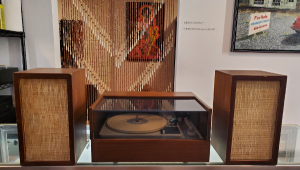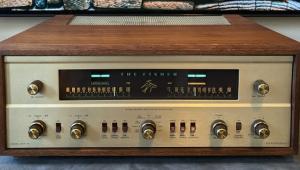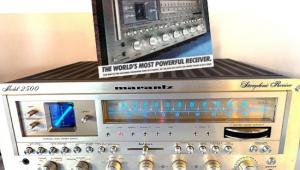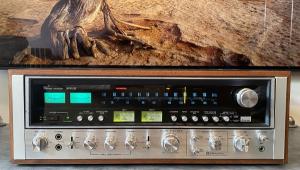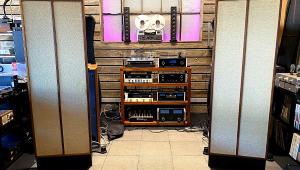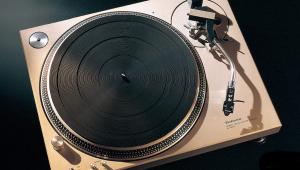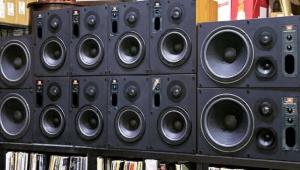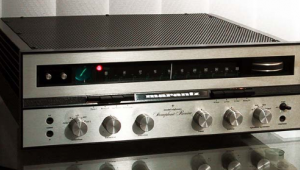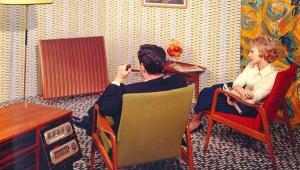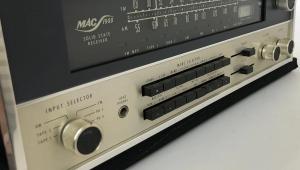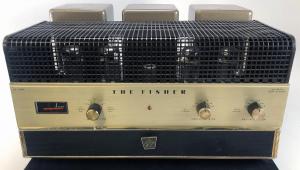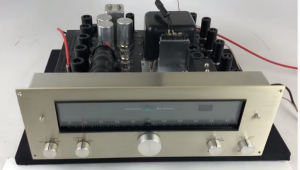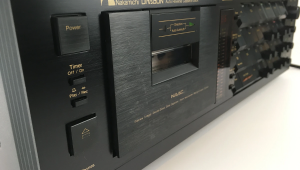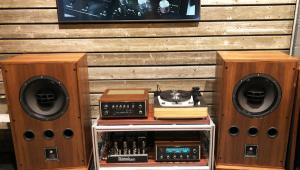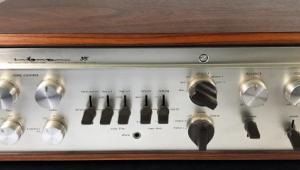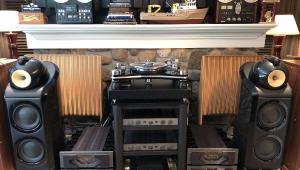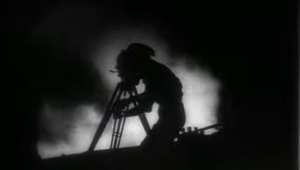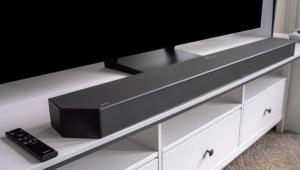Yamaha was iconic in both quality and design. The solid construction of US made receivers of earlier times with a clean industrial design that looked near luxury. I liked the silver best without a doubt, although I did have at least one late 70's Yamaha components in black that still had the clean visual language so prominent in those silver ones. I think this kind of design has proven to transcend time as it still looks seriously up to date and premium. I think the latest Technics electronic components are mostly inspired by Yamaha, or at least they remind me of Yamaha more than seventies Technics components. I'd call it high praise all around.
The Yamaha CR-2020: A True ’70s Blockbuster
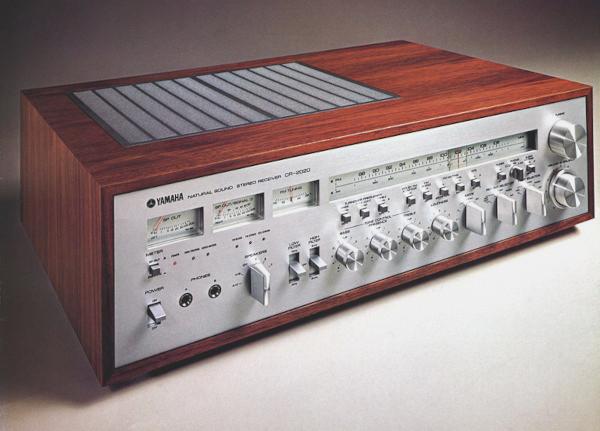
Over the past couple of years, we’ve written about such icons as the The Fisher 800-B from 1961 and the 70s-era Marantz 2500 and Sansui 9090DB — each a masterpiece in its own right.
Today we turn our attention to another 70s-era tour de force: the Yamaha CR-2020.
Yamaha introduced the CR-2020 in 1977 and it quickly became one of the brand’s best-selling models. Boasting a respectable output of 100 watts/channel into 8 ohms with “no more than 0.05% total harmonic distortion,” the CR-2020 was one step down from the flagship CR-3020, a veritable beast that put out 160 watts a side and offered a slightly more refined lineup of features and controls.
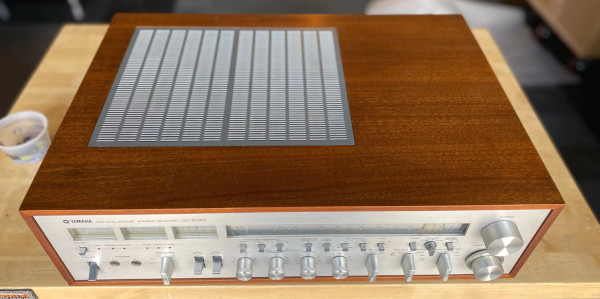
Yamaha was so laser-focused on eliminating distortion that its engineers came up with a new way of measuring it. They called it Noise Distortion Clearance Range and it required “all pertinent measurements [to] be made under actual listening conditions; through all amplification circuits used in actual listening (i.e., Phono Input to Speaker Out), and at the volume control settings preferred for normal listening levels.”
In a sales brochure, Yamaha tied its measurement methods to an overall design philosophy: “To us at Yamaha NDCR is more than just a measurement. It reflects the design approach to all our music products. Because we pay such close attention to their sound in actual use, our engineers developed this assessment method to help build in the same tonal response for home audio enjoyment.”
Like most receivers of that time, the CR-2020 was big, weighing in at around 41 pounds and stretching 21 inches across, 6.5 inches tall, and 16 inches deep. And like many higher-end models, it’s housed in a gorgeous solid-wood case that amplifies its appeal. By comparison, the CR-3020 was almost twice as heavy at 77 pounds (owing mostly to its bulkier power section) and measured 24 x 7 x 19 inches. A beast, indeed. And at $1,500 (the equivalent of around $7,000 today), the CR-3020 cost twice as much as the CR-2020, which explains why it didn’t sell very well and why it is so hard to find these days.

CR-2020 features of note include moving magnet (MM) and moving coil (MC) phono inputs, pre-out/main-in connections, independent audition and recording modes, two front-panel headphone jacks, connections for three sets of speakers, and a continuously variable loudness-compensation control instead of the usual in/out button: turning the dial counter-clockwise reduces the volume without upsetting the natural balance between low and high frequencies. The speaker connectors are of the spring-clip variety, which were common in the ’70s but decidedly cheesy by today’s standards.
In addition to the usual bass and treble knobs, the receiver has a Presence control for adjusting mid-frequencies (centered at 3 kHz) and provides selectable turnover frequencies of 125/250 Hz for the bass control and 2.5/8 kHz for the treble control. As Yamaha puts it in the owner’s manual, “The special Presence control offers direct control of these frequencies, readily compensating for records which have a heavy or thin midrange characteristic, and offering new possibilities for delicate tonal coloration.”
There’s also an Audio Muting button next to the large volume dial — another hallmark of classic receivers — a Defeat button that removes the tone controls from the signal path, and front-panel switches for engaging steep (12 dB/octave) cutoff filters: 70Hz/15 Hz (Low) or 8kHz/12kHz (High), both defeatable.
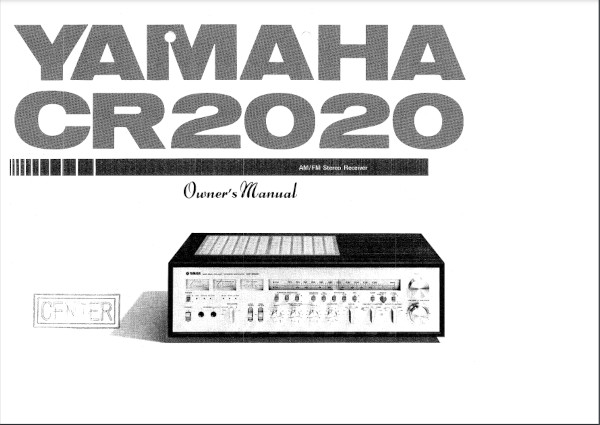
In the owner’s manual, Yamaha calls out a handful of “special features,” a few of which are quoted here:
• Direct Assessment of Differential Gain. This sophisticated technique enables Yamaha to combine high station-getting ability, razor-sharp tuning, and ultra-low distortion in the tuner section.
• Optimum Tuning System. The OTS system will take over from you the fine-tuning needed to obtain minimum distortion and maximum stereo separation, so that all FM stereo programs are heard at their best.
• Multi-Function Meters. Fast-response wide-level meters indicate power output levels from 0.05 W to 200 W (for 8-ohm speakers), with the right channel meter doubling as signal strength and (on FM) signal quality meter.
• Super Low-Noise MC Head Amp. This IC unit makes the superior performance of low output moving coil cartridges yours without the cost of a separate step-up transformer or head amplifier.
If you search the internet, you will find a good bit of commentary and information on Yamaha’s ’70s-era receivers as well as a handful of original CR-2020 units for sale. They range in price from $1,000 for a unit in “good condition” that may or may not work to $3,000 for a near perfect, single-owner specimen that has been fully serviced with updated components, including transistors, resistors, and power-supply capacitors. You can read about the latter at skyfiaudio.com, the website for New Jersey-based vintage audio specialist SkyFi Audio.
For more on this impressive blast from the past, click here for Mike Levine’s interesting case study, “Vintage vs. Modern Yamaha Receivers,” which appears on Yamaha’s website.
- Log in or register to post comments


Feel the satisfaction of mastering a new trick or conquering a challenging course in slope 3
